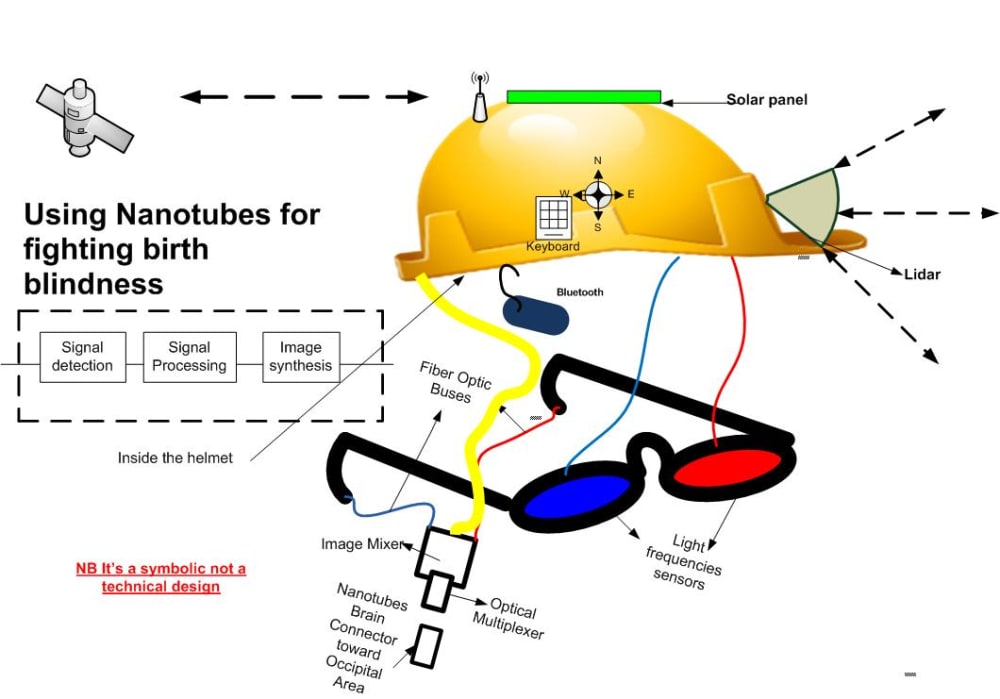Anti-Blindness System. This project utilizes electronic circuits and optical devices that already exist. Inside the helmet, we’ve put a polarimeter and a spectrometer which help blind people to obtain precise information about soil composition(snow, mud), deep water, vacuous spaces and so on. We also put a GPS and a cellphone connected on the internet in the helmet so the owner can find his way and go wherever he wants. The spectacular glasses are actually a set of optical lenses functioning as light sensors. The glasses work as webcam lens but they will also be able to process infrared radiation for improving night vision. It is important to advise that the images obtained by the system won’t be the same as for those who can see. Many parameters such as color and emotion will not be observed. However, those glasses will help the owner to get a 3-dimensional vision to move freely, recognize his friends and family members’ silhouettes and prevent him from falling into holes or hit objects. Because the owners didn’t know what is vision some training will be necessary before they can get autonomy for moving by themselves. The helmet contains a video laboratory that analyses the light as A human retina does. After the signal is processed, it is transformed into electric impulses and sent to the occipital brain area (the vision nerve center) thanks to nanotubes connected to optical nerves. Batteries assure 3 hours of autonomy during darkness. Public authorities will have to put in place some additional arrangements to improve the system. For example, they’ll have to recommend banks, restaurants, department stores, subways and airports to put special light transmitterS at their main door, their escalators etc. Besides this, the system can save usual paths utilized by the owner and help him to get back home or to find out the nearest police station in case of emergency. Certainly this system will be improved with time and will help blind people (birth blind or not) to acquire or recover more accurate vision. We firmly believe in our system because, nowadays, neurologists can realize minor brain surgeries in less than 4 hours. Patients are able to return home the same day. In the future, it will also be possible to apply nanotubes to other dysfunctions as paralysis due to vertebral column injuries.
(Warning: This project will take many years before becoming operational. So it’s very important to begin as soon as possible. We’ve got medical advice from a neurologist before designing it. Sound previous experiments on animals will be necessary to prevent side effects before applying nanotubes in the human brain.)
Like this entry?
-
About the Entrant
- Name:Gina Gracia
- Type of entry:individual
- Hardware used for this entry:Personal ComputerSoftware used for this entry:Visio and Office 2007
- Patent status:pending

